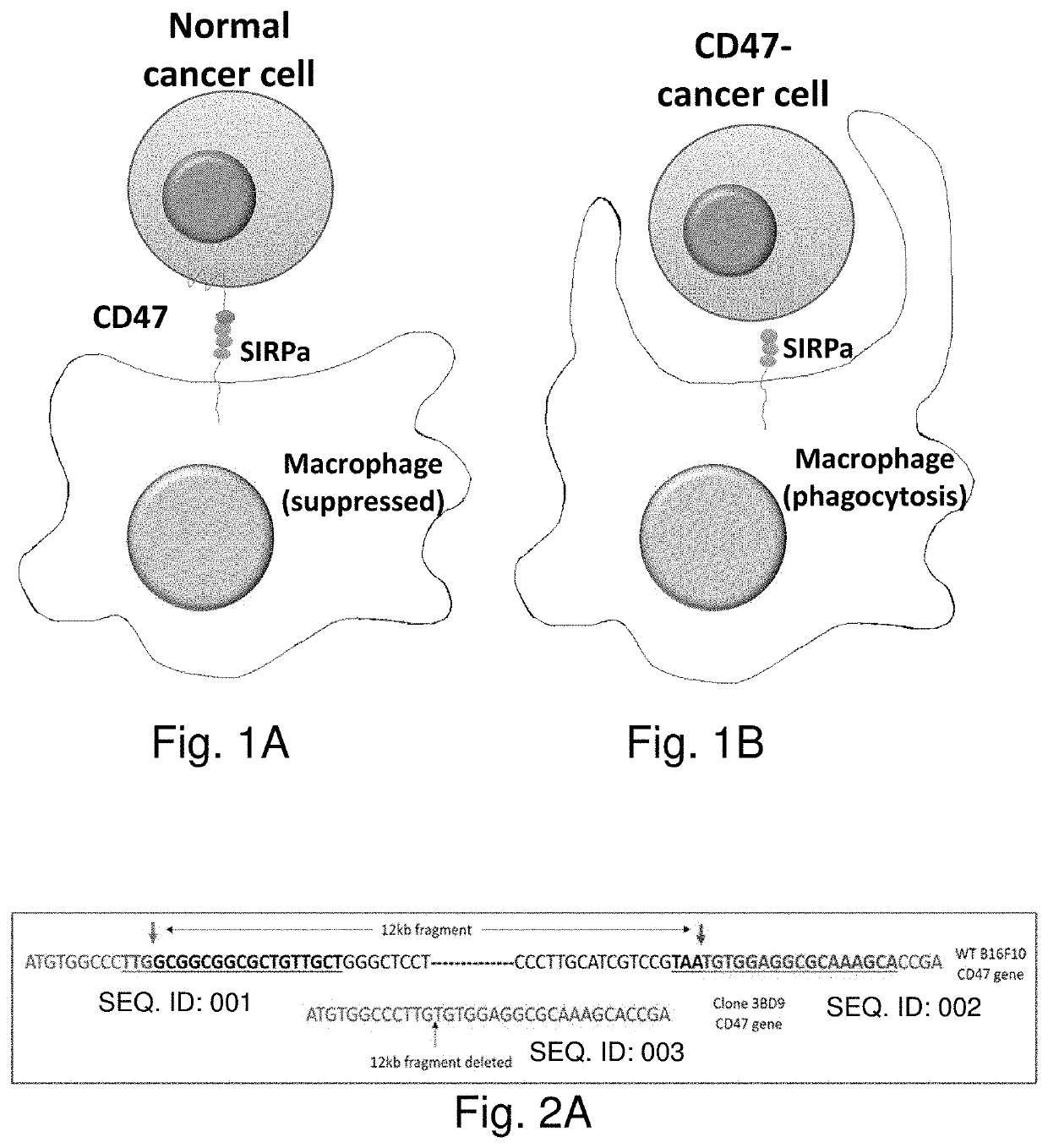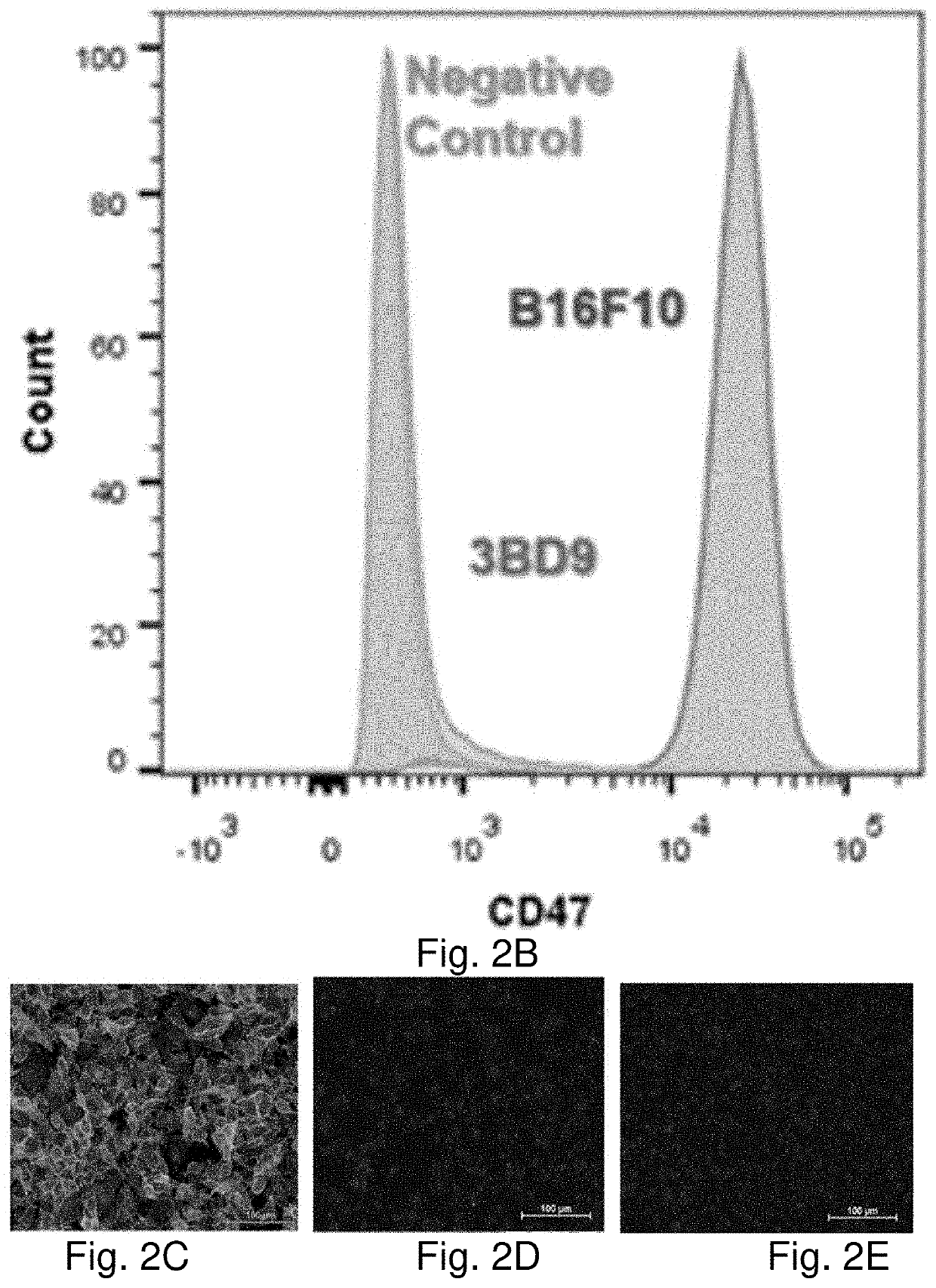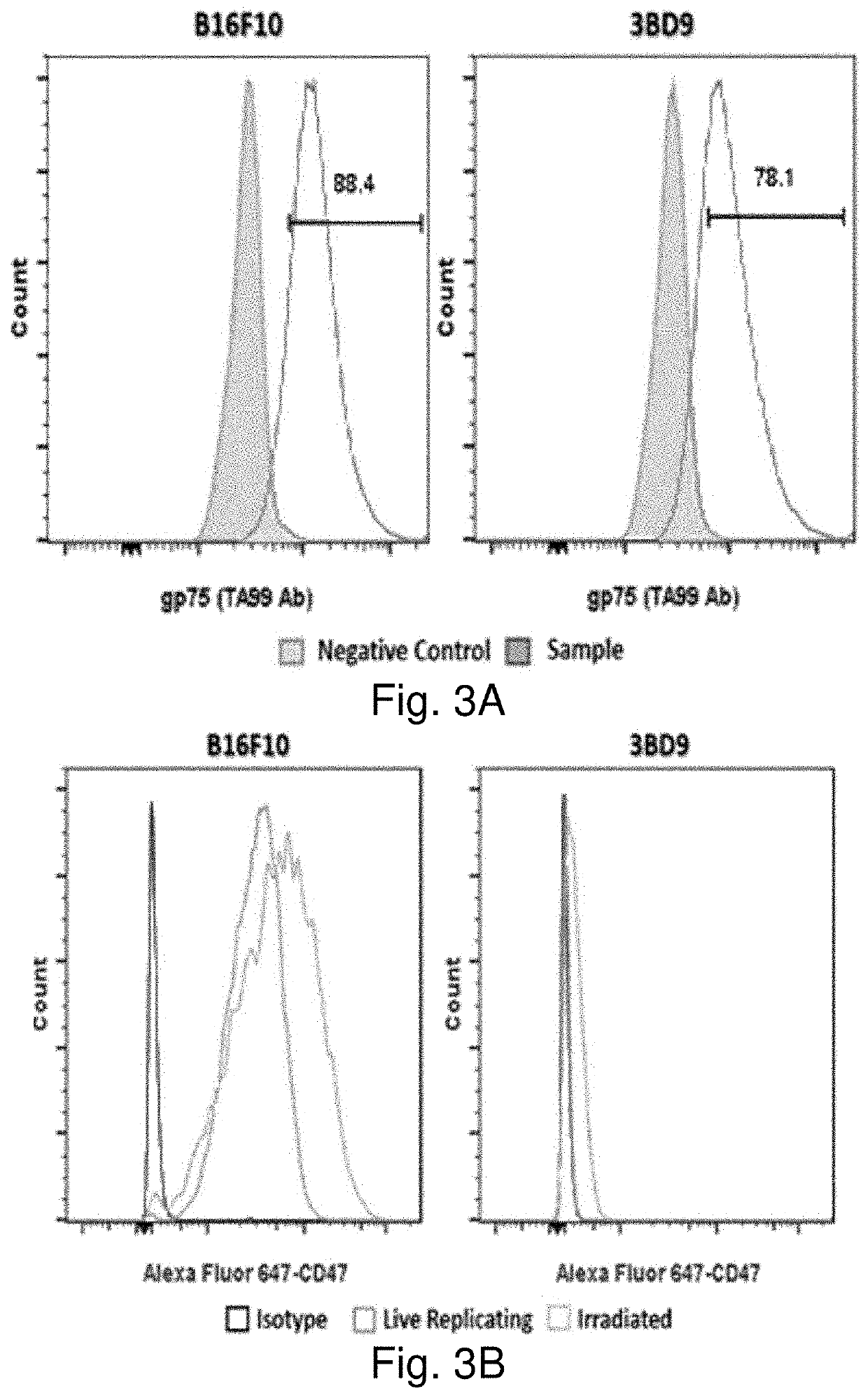Genome edited cancer cell vaccines
a cancer cell and gene editing technology, applied in the field of cancer vaccines and immunotherapy, can solve the problems of adverse side effects, hindering tumor penetration, and both methods have weaknesses, and achieve the effect of increasing the immune recognition of cancer cells and reducing suppression
- Summary
- Abstract
- Description
- Claims
- Application Information
AI Technical Summary
Benefits of technology
Problems solved by technology
Method used
Image
Examples
Embodiment Construction
[0389]Current cancer treatments are not satisfactory. On the other hand, the body immune system is designed to defend the body against pathogens and dangerous invaders including cancers. However, the body immune system fails to act on cancer cells. The increased expression of CD47 on tumor cells prevents them from being recognized by circulating immune cells such as macrophages. The use of anti-CD47 antibodies to block CD47 on tumor cells has proven effective. Nevertheless, this treatment represents some challenges including difficulty in penetrating antibodies into solid tumors. CD47 is expressed on the surface of many cells and is involved in a range of cellular processes such as apoptosis, proliferation, adhesion, and migration. Thus, the use of anti-CD47 antibodies can have some unpredictable side effects. The present technology utilizes whole-tumor cells as vaccines against cancer. According to a preferred embodiment, CD47-deficient cancer cells serve as both preventive and the...
PUM
| Property | Measurement | Unit |
|---|---|---|
| concentration | aaaaa | aaaaa |
| volume | aaaaa | aaaaa |
| temperature | aaaaa | aaaaa |
Abstract
Description
Claims
Application Information
 Login to View More
Login to View More - R&D
- Intellectual Property
- Life Sciences
- Materials
- Tech Scout
- Unparalleled Data Quality
- Higher Quality Content
- 60% Fewer Hallucinations
Browse by: Latest US Patents, China's latest patents, Technical Efficacy Thesaurus, Application Domain, Technology Topic, Popular Technical Reports.
© 2025 PatSnap. All rights reserved.Legal|Privacy policy|Modern Slavery Act Transparency Statement|Sitemap|About US| Contact US: help@patsnap.com



